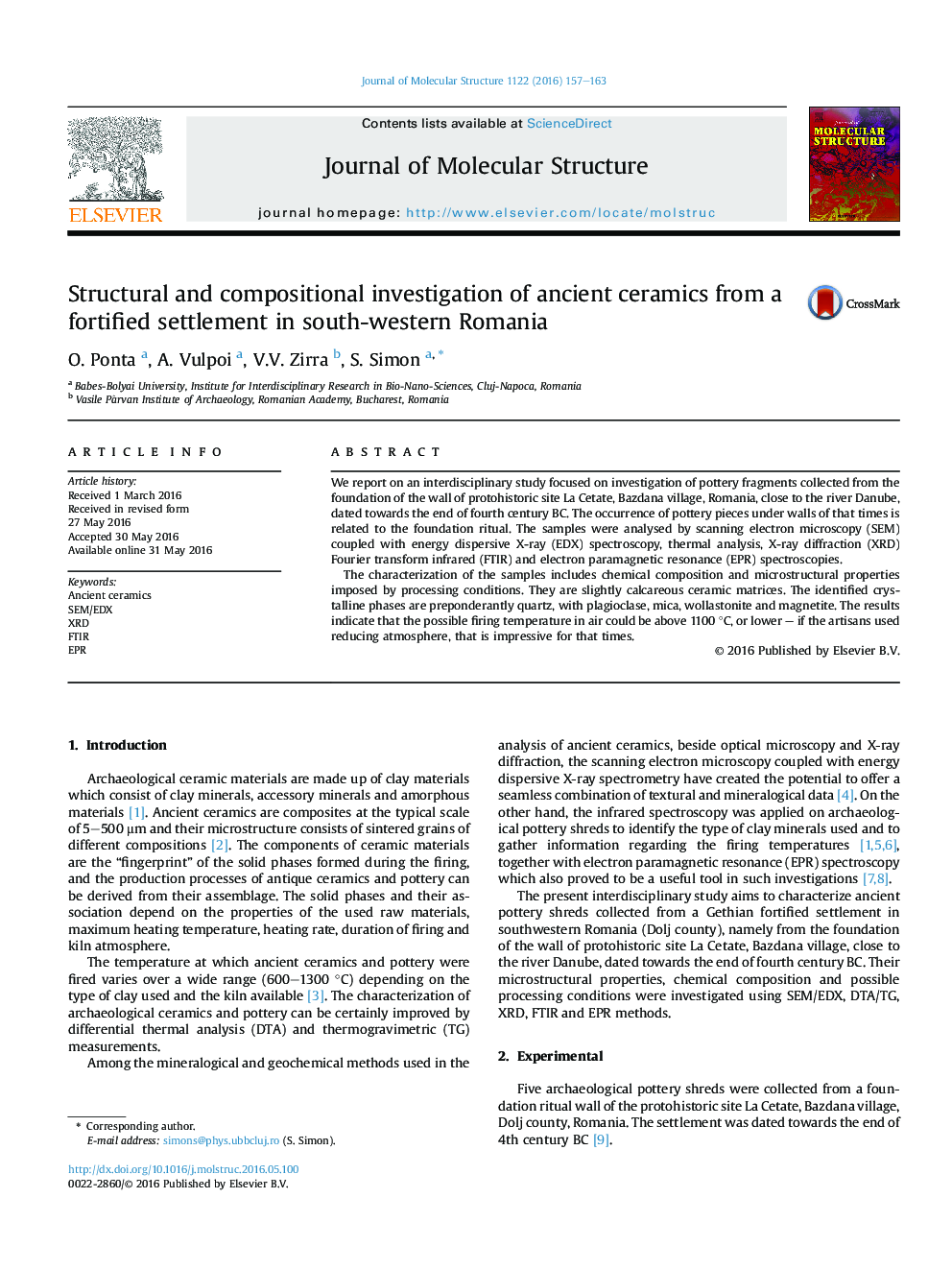| Article ID | Journal | Published Year | Pages | File Type |
|---|---|---|---|---|
| 1407679 | Journal of Molecular Structure | 2016 | 7 Pages |
•Chemical and microstructural characterisation of pottery fragments dated fourth century BC.•Analysis of clay material under the wall of the protohistoric site where the shards were found.•Considerations on the firing conditions.
We report on an interdisciplinary study focused on investigation of pottery fragments collected from the foundation of the wall of protohistoric site La Cetate, Bazdana village, Romania, close to the river Danube, dated towards the end of fourth century BC. The occurrence of pottery pieces under walls of that times is related to the foundation ritual. The samples were analysed by scanning electron microscopy (SEM) coupled with energy dispersive X-ray (EDX) spectroscopy, thermal analysis, X-ray diffraction (XRD) Fourier transform infrared (FTIR) and electron paramagnetic resonance (EPR) spectroscopies.The characterization of the samples includes chemical composition and microstructural properties imposed by processing conditions. They are slightly calcareous ceramic matrices. The identified crystalline phases are preponderantly quartz, with plagioclase, mica, wollastonite and magnetite. The results indicate that the possible firing temperature in air could be above 1100 °C, or lower – if the artisans used reducing atmosphere, that is impressive for that times.
